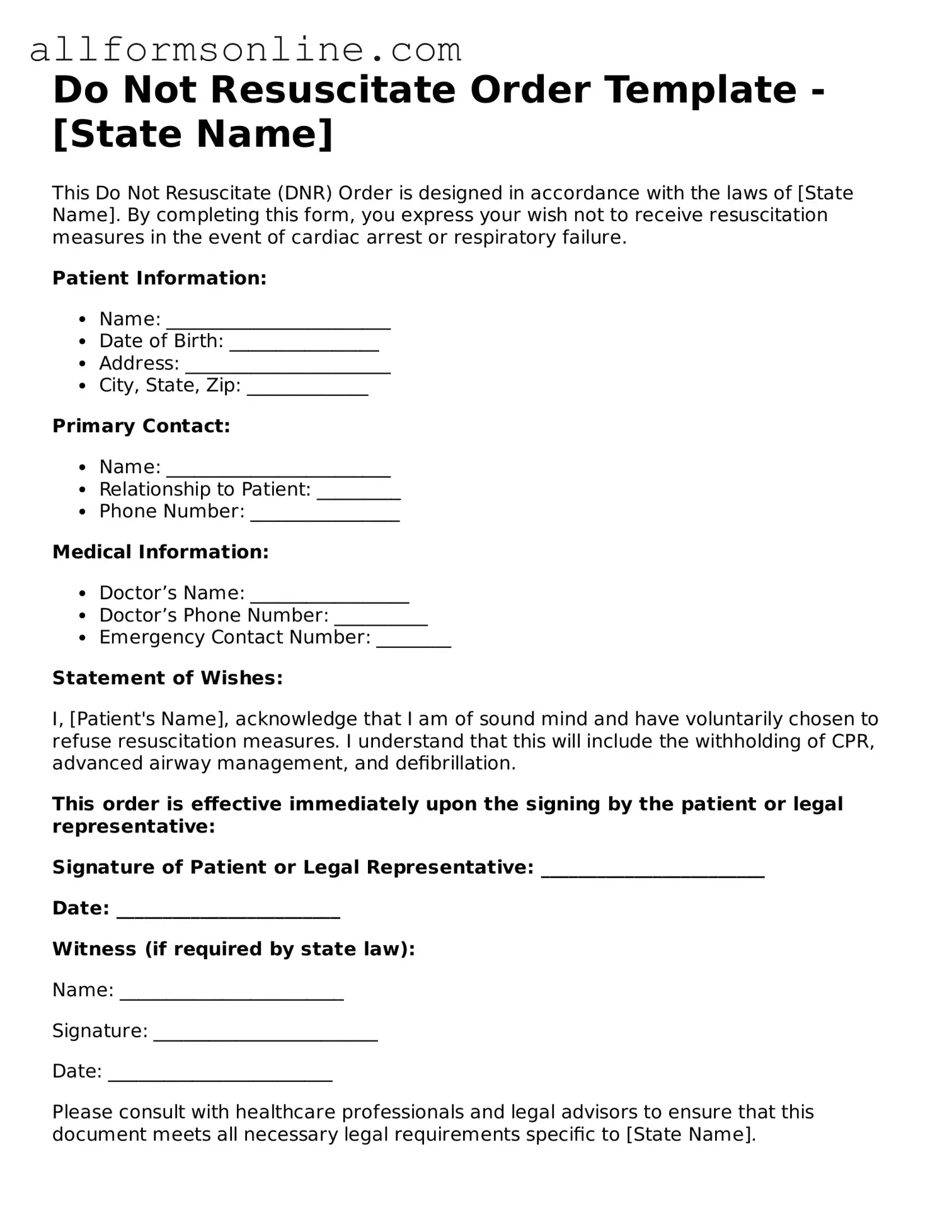What is a Do Not Resuscitate (DNR) Order?
A Do Not Resuscitate Order is a medical directive that informs healthcare providers not to perform cardiopulmonary resuscitation (CPR) if a patient's heart stops beating or if they stop breathing. This order is typically put in place for individuals who wish to avoid aggressive life-saving measures in the event of a medical emergency.
Who can request a DNR Order?
Generally, a DNR Order can be requested by a patient who is capable of making their own medical decisions. If the patient is unable to communicate their wishes, a legally authorized representative, such as a family member or designated healthcare proxy, may request the order on their behalf.
How is a DNR Order created?
A DNR Order is usually created in consultation with a healthcare provider. The process may involve filling out a specific form that outlines the patient's wishes. It's essential that this form is signed by both the patient (or their representative) and a physician to ensure it is legally valid.
Is a DNR Order valid in all settings?
Yes, a DNR Order is generally valid in all healthcare settings, including hospitals, nursing homes, and at home. However, it is crucial to communicate the existence of the DNR Order to all healthcare providers involved in the patient's care to ensure that their wishes are respected.
Can a DNR Order be revoked?
Absolutely. A patient or their authorized representative can revoke a DNR Order at any time. This can be done verbally or in writing. It’s important to inform healthcare providers immediately if the order is revoked to avoid any confusion during a medical emergency.
What happens if a DNR Order is not in place?
If a DNR Order is not in place and a patient experiences cardiac arrest or respiratory failure, healthcare providers will typically initiate CPR and other life-saving measures. This may include chest compressions, intubation, and medications, depending on the situation and the patient's condition.
How does a DNR Order differ from other advance directives?
A DNR Order specifically addresses the issue of resuscitation, while other advance directives, such as living wills or healthcare proxies, may cover a broader range of medical decisions. Living wills outline a person's preferences for medical treatment in various situations, while healthcare proxies designate someone to make decisions on the patient's behalf when they are unable to do so.
Will a DNR Order affect other medical treatments?
No, a DNR Order only applies to resuscitation efforts. It does not affect other medical treatments or interventions. Patients with a DNR Order can still receive medications, pain management, and other necessary care, as well as comfort measures to ensure their quality of life.
How can I ensure my DNR Order is honored?
To ensure your DNR Order is honored, it is important to communicate your wishes clearly to your healthcare providers and family members. Keep a copy of the DNR Order in an accessible place, such as your medical records, and consider wearing a medical alert bracelet that indicates your DNR status.
Where can I obtain a DNR Order form?
DNR Order forms can often be obtained from your healthcare provider, hospital, or state health department. Some states also provide downloadable forms on their official websites. Make sure to use the correct form for your state, as requirements may vary.
